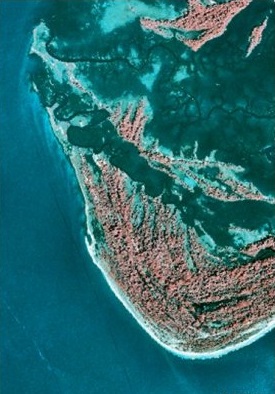Characterization of the Ashepoo-Combahee-Edisto (ACE) Basin, South Carolina
Significant Natural Areas

Significant natural areas are designated by South Carolina's Heritage Trust Program and must contain (1) endangered or threatened animal or plant species; (2) outstanding remnants of an undisturbed plant community or ecosystem; (3) unusual or outstanding scientific, educational, aesthetic, or recreational characteristics; or (4) unique landforms. South Carolina Heritage Trust has designated 246 sites in the ACE Basin study area as significant natural areas (Heritage Trust Database 1997). One hundred and fifty-five of these sites provide habitat for federally endangered or threatened species, state threatened species, and species of concern. Thirty-three significant natural areas are recognized as outstanding examples of coastal plain communities. Fifty-seven of the significant natural areas have outstanding scientific characteristics that include colonial waterbird rookeries and feeding habitats. The natural areas differ in size, natural quality, and uniqueness in regard to species and community type. Consequently, the priority ranking of the natural areas ranges from national to local significance.
Several highly significant natural areas in the ACE Basin study area are protected through purchases or conservation easements. Cowbane Heritage Preserve, the natural area that that harbors the federally endangered Canby's dropwort (Oxypolis canbyi) is owned by the state (Rayner 1984). The Nature Conservancy bought a relatively undisturbed region of Snuggedy Swamp that contains high quality freshwater wetland, including the largest grass-sedge-marsh/loblolly-bay complex in South Carolina. Otter Island located in St. Helena Sound, encompasses a full array of relatively undisturbed representatives of maritime estuarine, and palustrine communities, including dunes, maritime forests, Spartina marshes, and fresh to brackish ponds. The island also hosts several nesting colonies of rare birds and populations of rare plants, and it is a nesting site of the loggerhead turtle, a federally endangered species. The state and federal entities and various conservation and private organizations are continuing to purchase lands or acquire conservation easements to protect other areas that have high priority.
Heritage Trust staff continuously updates information about natural areas as new occurrences are found, existing populations change, and the status of species or plant communities are reclassified. The Heritage Trust Program relies on the assistance of professionals that can track and document the occurrences of rare species and communities. The staff will provide technical guidance and appropriate forms and maps to all interested in helping with this process.
